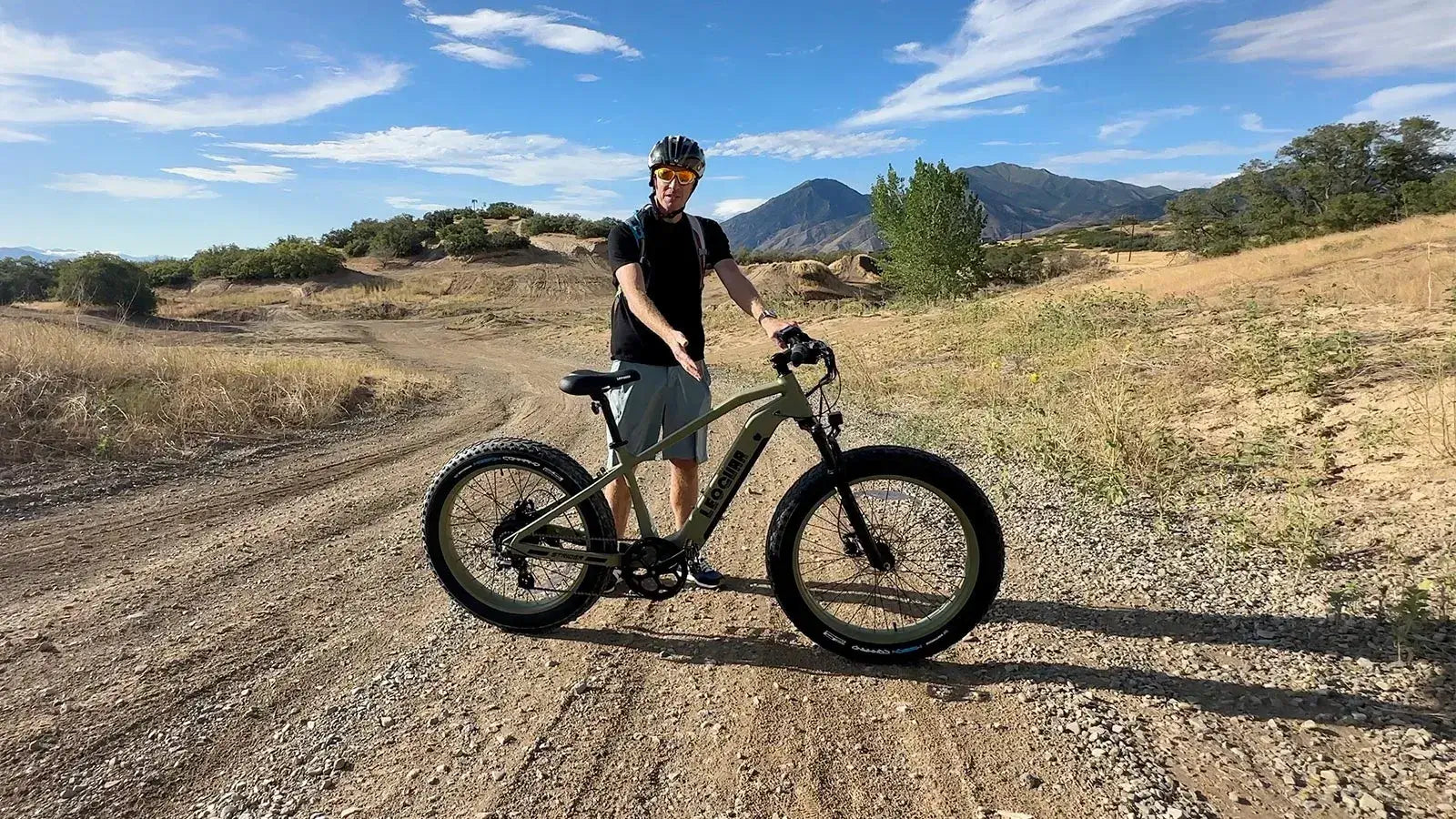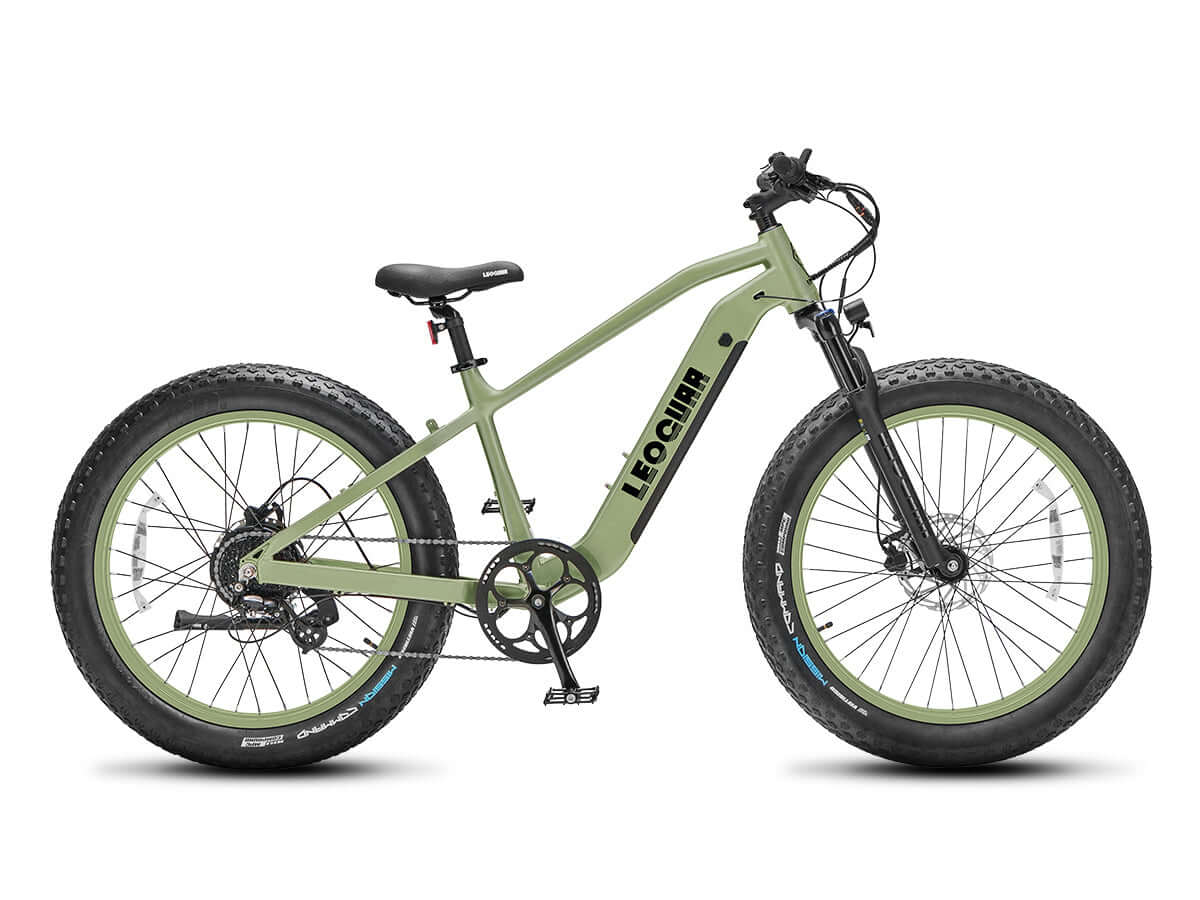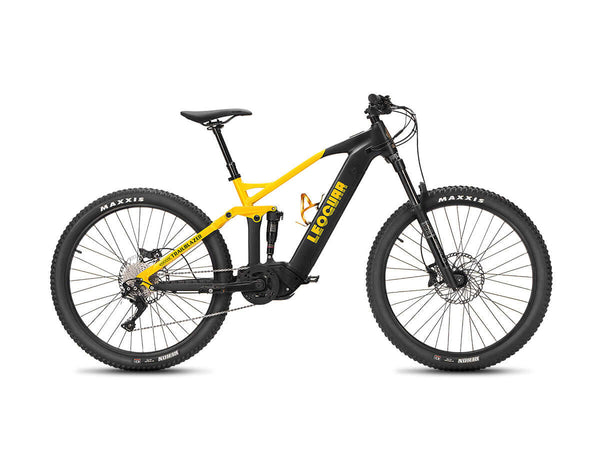
Fat Tire vs Mountain Electric Bike: Which eBike Should You Choose?
Electric Bikes: Fat Tire vs Mountain Bike Guide
Electric bikes are exciting. But choosing between different types can feel overwhelming when you're just starting out. Two popular types are fat tire e-bikes and electric mountain bikes. They look similar at first glance, but these bikes work very differently from each other. So which one should you buy?
The answer depends on where you want to ride.
Fat tire electric bikes work best on soft surfaces like sand, snow, and mud. Electric mountain bikes handle technical trails with rocks, roots, and steep hills much better. This guide will help you pick the right bike. We'll compare both types and show you real examples of when each bike works best.
The All-Terrain Cruiser
A fat tire electric bike is more than just a bike with big tires. It's built around one main idea: going anywhere while staying comfortable on rough ground. The bike's design centers on stability and comfort above everything else.
More Than Just Wide Tires
Fat tire bikes have huge tires that measure 4.0 inches or wider. But the secret isn't just the size - it's the low air pressure they use, usually between 5 and 20 PSI. This low pressure lets the tire spread out flat against the ground. The tire creates a big contact area that helps the bike "float" over sand and snow instead of sinking in.
The whole frame is built differently to fit these massive tires. The fork and back part of the frame are much wider to give the tires room to move. The frame puts you in an upright, relaxed position. This feels more like riding a beach cruiser than a racing bike, which makes long rides much more comfortable.
Ideal Use Cases
Fat tire e-bikes work best in specific places:
- Soft Surfaces: They're unbeatable on sand, snow, and deep mud
- Loose Terrain: They handle loose gravel, dirt roads, and bumpy fields with confidence
- Comfort Riding: The big tires work like natural shock absorbers on pavement and easy trails
- Stability: The wide tires give new riders a stable, confidence-building platform
The Riding Feel
Your first ride on a fat tire e-bike feels unique. The bike feels planted and secure under you, absorbing small bumps and making everything feel smooth. On pavement, you'll hear the tires humming and notice the steering feels a bit heavy. But once you ride on a beach or snowy path, you'll understand why the bike is built this way. It's made for exploring and having fun, not for going fast or making sharp turns.

The Trail-Taming Machine
An electric mountain bike is completely different. It takes a regular mountain bike design and adds a smart electric motor to boost your pedaling power. The goal isn't just getting through rough terrain - it's riding faster, longer, and with more control than ever before.
Precision Engineering
Electric mountain bikes don't rely on big tires for comfort. Instead, they use suspension systems with springs and shocks to absorb impacts from rocks and roots. Most have a suspension fork in front, and many have full suspension with a rear shock too. This system keeps the tires touching the ground for better grip and control over obstacles.
The bike frame geometry is aggressive and forward-leaning. This design gives you stability when going fast downhill and helps you climb steep hills efficiently. The tires are typically 2.3 to 2.8 inches wide and run at higher pressure (20-35 PSI) for precise handling.
Advanced Motor Integration
The motor system makes a huge difference. While fat tire bikes often use hub motors in the wheels, high-end electric mountain bikes use mid-drive motors at the pedals. These motors have sensors that measure how hard you're pedaling. The motor then gives you the right amount of help based on your effort.
This creates a natural feeling where it seems like you suddenly have super-strong legs. The smooth power delivery helps you navigate tricky trail sections where you need precise control.
Ideal Use Cases
Electric mountain bikes are specialized tools for specific riding:
- Singletrack Trails: Perfect for narrow, winding forest paths
- Technical Climbs and Descents: The motor helps you power up steep climbs while the suspension handles challenging downhills
- Rock Gardens and Root Sections: The suspension absorbs big impacts while keeping you in control
- Bike Parks: Can handle jumps, drops, and banked turns at dedicated mountain bike areas
The Riding Feel
Riding an electric mountain bike on proper trails is thrilling. The bike feels like part of your body - quick, responsive, and alive under you. The suspension works constantly, smoothing out rough terrain while giving you feedback about what's happening. The motor makes scary climbs manageable, saving your energy for the fun downhill sections. It's a bike that pushes you to improve your skills and try harder trails.
Head-to-Head Comparison
Here's how these bikes compare side by side:
| Feature | Fat Tire Electric Bike | Electric Mountain Bike |
|---|---|---|
| Primary Terrain | Sand, snow, mud, light trails, pavement | Technical singletrack, steep hills, rocky trails |
| Tires & Pressure | 4.0"+ wide / 5-20 PSI | 2.3"-2.8" wide / 20-35 PSI |
| Suspension | Big tires act like suspension; some have front forks | Active suspension with front fork or full-suspension |
| Frame Position | Relaxed, upright, comfort-focused | Aggressive, forward-leaning, performance-focused |
| Motor System | Often powerful hub motors in wheels | Usually mid-drive motors with smart sensors |
| Main Strength | Floating over soft surfaces and stability | Quick handling and control |
| Riding Feel | Cushioned, stable, like a monster truck | Quick, responsive, like a rally car |
| Best For | Easy exploring on varied, often soft surfaces | High-performance trail riding and skill building |
Real-World Scenarios
Let's look at different riders to see which bike fits best.
The Weekend Explorer
Meet Alex. Alex lives near the coast and takes winter trips to a mountain cabin. Alex wants an e-bike for easy rides along the beach, exploring snowy paths in winter, and cruising on bike lanes and gravel roads. Comfort and going anywhere matter more than speed or technical performance.
The Choice: Alex should get a fat tire electric bike. Its ability to float over sand and snow opens up riding opportunities impossible on other bikes. The cushioned ride stays comfortable for hours of cruising. The built-in stability gives confidence on any surface, paved or not.
The Trail Seeker
Now meet Jordan. Jordan loves the excitement of navigating forest trails and wants to tackle challenging climbs while improving downhill skills. Jordan plans to spend 90% of riding time on dedicated mountain bike trails.
The Choice: Jordan needs an electric mountain bike. The suspension, quick geometry, and responsive motor are specifically designed for trail environments. It provides the grip needed for loose climbs and the control required for technical descents. Using a fat tire bike on these trails would feel slow and clumsy.
The All-Rounder's Dilemma
Finally, there's Casey. Casey wants everything: commuting to work on pavement, riding gravel paths on weekends, and occasionally trying smooth forest trails. Casey isn't planning to ride on sand or snow, and won't tackle expert-level descents.
The Choice: This is the trickiest situation. Both bikes require compromise for Casey.
A fat tire e-bike would be very comfortable for commuting and gravel paths but would feel sluggish on forest trails. An electric mountain bike would excel on trails but might feel like overkill on pavement. For riders like Casey, follow the "80% rule." Choose the bike that best suits the terrain you'll ride 80% of the time.
If comfort and flexibility for mixed, non-technical surfaces matter most, the fat tire bike wins. If exploring proper trails is the main goal, even if only 20% of the time, an entry-level electric mountain bike might be more rewarding long-term.

Final Factors to Consider
Before making your final decision, think through these important points.
Your Primary Terrain
This is the most important question. Don't buy a bike for the 5% of riding you might do - buy it for the 95% you will do. If your dream is riding on the beach, get the fat tire bike. If it's riding singletrack trails, get the electric mountain bike.
Comfort vs. Performance
Do you want a laid-back, cushioned ride or an engaged, athletic experience? Fat tire bikes focus on comfort with upright positions and massive tires. Electric mountain bikes are built for performance, connecting you to the trail and rewarding active riding.
The Role of Suspension
Remember that fat tire "suspension" is different from electric mountain bike suspension. Fat tires handle small bumps and vibrations well. For rocks, roots, and drops, there's no substitute for quality suspension forks and rear shocks.
Motor and Budget
Generally, fat tire e-bikes offer lots of power and capability for less money, often using strong hub motors. High-performance electric mountain bikes cost significantly more because of their advanced suspension, lightweight frames, and sophisticated motors. Be realistic about your budget and understand what features you're paying for.
Making Your Choice
Choosing between a fat tire electric bike and an electric mountain bike doesn't have to be hard. Think honestly about where you want to ride and what experience you want.
If your perfect ride involves exploring new places, floating across sand or snow, and enjoying a stable, comfortable cruise, the fat tire e-bike is your ideal bike. It's the flexible adventurer of the e-bike world. If your heart is set on trail thrills - powering up technical climbs, flowing through winding singletrack, and pushing your skills to new levels - then the precision of an electric mountain bike is what you need. It's the performance athlete, ready for any trail challenge.
Choose the bike that matches your adventure style. You won't just be buying an e-bike - you'll be opening up a whole new world of riding possibilities.
Frequently Asked Questions
1. Can I use a fat tire e-bike on mountain bike trails?
You can ride fat tire e-bikes on easy trails, but they're not ideal for technical mountain bike trails. The wide tires and relaxed geometry make them slower and harder to control on narrow, twisty paths with obstacles.
2. Are electric mountain bikes good for beginners?
Yes, electric mountain bikes can be great for beginners. The motor assistance helps new riders tackle climbs they couldn't manage otherwise, building confidence and skills. Start with easier trails and work your way up.
3. Which type of e-bike is better for winter riding?
Fat tire e-bikes are much better for winter riding, especially in snow. The wide tires at low pressure provide excellent flotation and grip on snow and ice. Electric mountain bikes can work in winter but struggle in deep snow.
4. Do I need full suspension on an electric mountain bike?
It depends on the trails you ride. A front suspension (hardtail) electric mountain bike works fine for most trails and costs less. Full suspension is better for very rough, technical trails with lots of rocks and drops.
5. How much should I expect to spend on each type of bike?
Quality fat tire e-bikes typically start around $1,200-$2,000. Electric mountain bikes usually start around $2,500-$3,500 for entry-level models, with high-end versions costing $5,000 or more due to advanced suspension and components.










































Leave a comment